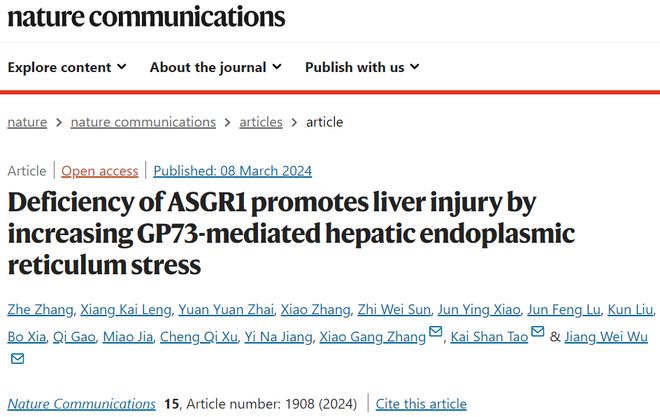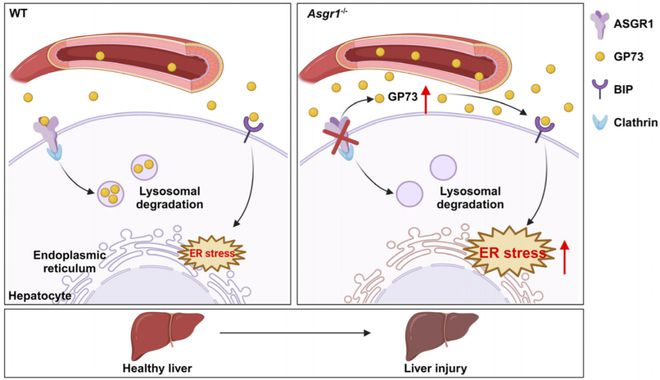Recently, Professor Zhang Xiaogang, Chief Physician from Department of Hepatobiliary Surgery of the First Affiliated Hospital (FAH) of Xi’an Jiaotong University (XJTU), as the co-corresponding author, cooperated with Professor Wu Jiangwei from Northwest A&F University, published an article entitled "Deficiency of ASGR1 promotes liver injury by increasing GP73-mediated hepatic endoplasmic reticulum stress" in Nature Communications. The researchers found that asialoglycoprotein receptor 1 (ASGR1) is a lectin specifically expressed in the liver, and its expression is down-regulated in patients with liver fibrosis or cirrhosis and male mice with liver injury. In male mice, ASGR1 deficiency aggravated acetaminophen-induced acute and CCL4-induced chronic liver injury, whereas ASGR1 overexpression mitigated liver injury.

Liver injury, characterized by hepatocyte injury, liver inflammation and fibrosis, is considered to be the most common cause of liver diseases worldwide, which may eventually develop into severe liver diseases, such as cirrhosis and hepatocellular carcinoma (HCC), etc. Although it is well accepted that genetic factors play crucial roles in the pathogenesis of all types of liver injuries, the precise genetic predisposing factors for liver injury remain inadequately understood. In previous National Natural Science Foundation of China project, Professor Zhang Xiaogang’s research team has found that transplantation of mouse liver stem cells transfected with CTLA-4.FasL fusion gene could mitigate acute liver injury models induced by D-galactosamine. In addition, transplantation of liver stem cells could also activate and induce endogenous liver regeneration, which provided experimental basis for subsequent study of stem cell therapy for acute liver injury.
To further unravel the mechanism of liver injury, the research teams constructed APAP-induced acute drug-induced liver injury and CCl4-induced toxin-induced chronic liver injury models by using ASGR1-deficient pigs and mice. The results revealed that ASGR1 depletion can aggravate while its over-expression can mitigate liver injury, confirming that ASGR1 is a predisposing gene for liver injury.
This study demonstrates that ASGR1 exerts multi-genic effects. ASGR1 depletion can reduce the risk of cardiovascular diseases whereas cause liver injury, which provides valuable reference for ASGR1-targeted treatment for diseases. The ASGR1 knockdown pig model constructed by the research team provides theoretical guidance for the construction of subsequent large animal models, and also offers useful support for unraveling the pathogenesis of cardiovascular and liver diseases and the screening of related drugs.

Schematic diagram (Credit: Nature Communications)